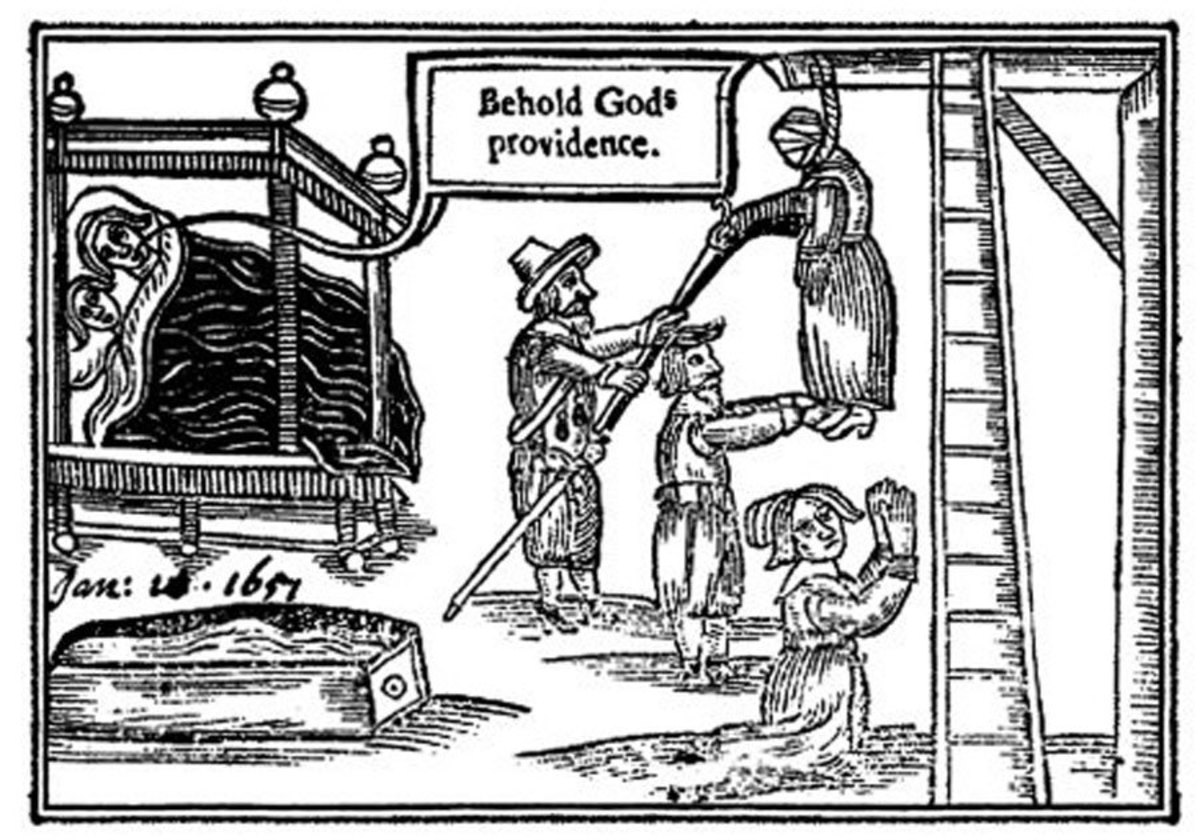The Rights and Wrongs of the Death Penalty
Mary Magdalene, rescued by Christ

Introduction
“Let him who has not sinned cast the first stone.” Typical of the values which, to some degree, still pervade societal views, The Old Testament of the Christian Bible records the intended stoning to death of “a woman taken in adultery” presumed to be Mary Magdalene.
Although adultery involves two participants, where her partner was, and why he seemed to have remained unpunished, is never revealed. At any rate, Christ’s injunction that only someone who had never sinned should cast the first stone can be said to have been the first known anti-death penalty statement.
While today this penalty is only applicable for first degree murder, as late as 1960, American Caryl Chessman was consigned to the gas chamber for robbery, kidnapping and rape. At no time was he indicted for murder.
The following article will address the bases for the death penalty, a brief history of its use, cases in which it has been applied, and perspectives regarding it.
The sovereign’s coinage
Tempting as it might be to relegate enjoyment of the infliction of pain and ridicule to an almost prehistoric era, we cannot, in truth, do so. This early case exemplifies the use of the death penalty for a crime which today would be punished by a fine or a fairly short-term prison sentence.
So divine was the right of monarchs that treason of any kind could be deemed almost blasphemous. As such, it could generate a sentence of death to be carried out in a way which, from our perspective, went beyond the horrific. Acts of treason could range from conniving in a plot to murder the reigning sovereign to counterfeiting a coin which bore his or her image.
In 1790, Thomas Parker and Sophia Girton were indicted on the grounds of having made coins from a base metal, then stamped and tinted them to resemble silver shillings.
How these culprits were caught
Two police constables, having gained knowledge sufficient to make them suspect this pair of the crime, entered the premises where Parker and Girton had rented rooms. Upon entry, they saw Parker throw some money out of the window, and drop more coinage onto the floor.
Upon searching the room they found a bottle of aquafortis (nitric acid), cream of tartar (tartaric acid), pliers, scissors, hammers, a flat iron, punches, cork, and sanding paper. Both Parker and Girton’s hands were stained a dark hue, indicating their working with the above-mentioned chemicals and tools. This evidence, combined with the constables retrieving the counterfeit coins, justified a search of both parties’ persons. Thus, Parker was found to be concealing the base metal pewter and silver Filings and Girton several more counterfeit shillings.
The old British shilling

Counterfeiters in court
In court an expert witness from the Royal mint explained to the Jury how the tools and chemicals were used to produce counterfeit coins, detailing the chemical aquafortis, which produced the appearance of silver.
Having been found guilty, Parker and Girton were sentenced to death. At this time, the method of execution for this offense depended on gender. While both were sentenced to be drawn on the hurdle to the place of execution, once there, Parker was hanged, but Girton was tied to the stake and burnt to death.
The old shilling
The British shilling is historically the value of a sheep or herd animal. Twelve pennies equaled one shilling and twenty shillings equaled one pound. It was in legal currency until 1971 when decimalization was introduced. The shilling was replaced by the 5 pence piece.
Drawn on the hurdle
The punishment of being drawn consisted of being tied by a rope attached to a horse and then dragged along the ground to the place of execution. This caused the prisoner’s flesh to be gashed, and torn. Crowds of spectators who attended for the entertainment had been too often disappointed when the prisoner died of these wounds prior to the anticipated event.
In order to prevent these deaths the hurdle was introduced. It consisted largely of lengths of wattle (the thin, flexible early growth of the hazel or willow tree) woven into the type of matting deployed in fence panels. The prisoner would be tied to the hurdle, and then drawn. This method still resulted in injury but the prisoner would survive long enough to allow the waiting audience to savor the final throes of his agony.
- This next case indicates the value of human life in times gone by.
A life for a lamb
In 1832 John Graves aged twenty was indicted for stealing two lambs, valued at four shillings. Here a shepherd noticed a newborn lamb was missing from his flock at twelve noon and then another one went missing at six pm on the same day. Four days later the shepherd found the first lamb at a nearby farm and retrieved it.
The constable investigating the theft ascertained that the farm owner had purchased the lamb in the belief it was a genuine purchase from John graves who had been employed at the farm some weeks earlier. However Graves had recently returned and offered the farmer two more lambs for sale. The farmer declined to purchase these because his suspicions were aroused. The constable was quick to find and arrest Graves who still had the two lambs in his possession. Both lambs had been stolen from the shepherd.
John Graves could offer no defense for his actions, and begged mercy from the judge. Despite his youth, he was found guilty and sentenced to death.
A benefit of debatable value

"I want to live"
These words, sent in a letter from Barbara Graham while on San Quentin’s death row, constitute the primal cry of all mortal creatures.
The belief that man is the only animal who knows he is going to die is, I have thought for some time, pretentious /presumptuous. Scientists credit elephants and animals on the high end of the intelligence scale as possessing this knowledge.
Still, perhaps this awareness is inborn, or at least intuited. At any rate, every creature capable of fighting for life, from the mightiest lion to the smallest mosquito, will battle to survive until the last nanosecond. This is true of nearly all of those confined to death row.
Increasing Indifference
It is sometimes said that in recent times, the number of murder trials has increased to the point where the public has become almost indifferent to their facts and consequences. Still, as far back as 1961, barrister J. D. Casswell wrote: Nowadays the thrill has gone out of most murder trials. The normal cut and thrust of advocacy takes on an added significance only when one knows a man’s life is at stake. Source: A Lance for Liberty.
Predators: the media’s marrow
According to private investigator John Douglas, a murder trial explores the outermost savagery of which a human being is capable. Such a trial he denudes emotions we have all experienced, but which most of us keep well-concealed beneath social civilities.
Thus, it is not surprising that these same kinds of cases are appealing to film-makers, playwrights and novelists. All those in search of an audience strive to create a central character with which the viewer/reader can feel some level of empathy. A danger lurks in the tendency towards compassion for a killer shifting emphasis and concern away from the victim. The following case illustrates this.
The question of Barbara Graham’s barbarity
The subject of a 1958 film, Barbara Graham was dubbed “bloody Babs” by the press. Doubtless her gender played some role in the vast coverage of her trial. Graham was found guilty of the murder of Mabel Monohan a sixty-four-old widow, in order to rob her of the money and jewels she was believed to retain in her home.
On an evening in March 1953, Graham was found to have gained entry to this home on the pretext of being desperate to use a phone. When Monohan opened the door, Graham and her male co-conspirators forced their way into the dwelling. Once inside, accounts differ as to what occurred. Blame was passed back-and-forth; the fellow conspirators claimed when Monohan refused to relinquish her valuables, Graham pistol-whipped her, causing her to fall to the floor. Once she lapsed into unconsciousness, they suffocated her with a pillow.
Portrayal by Susan Hayward
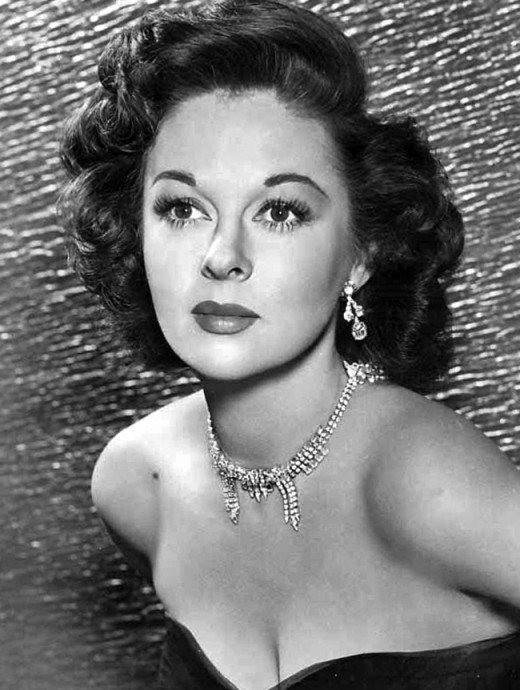
A tragic futility
Ironically, no actual theft took place. Although the victim did keep money and jewelry amounting $15,000 in cash and jewelry in a purse hidden within a closet not far from the site of her killing, it eluded her would-be robbers. Perhaps the exact truth as to who perpetrated which acts will never be known.
The irrefutable fact is that an innocent woman was killed due to greed, almost certainly by Graham and her cohorts.
Consequently, in June 1955, Barbara Graham aged 31, along with two of her accomplices were executed in the gas chamber at San Quentin Prison.
Her execution was scheduled for 10:00 a.m., but following two stays to consider commute, it took place at 11:30 a.m.. She was allowed to wear a blindfold saying she didn't want to watch those watching her die.
Seeking public sympathy
Susan Hayward won an Oscar playing the lead role in the film “I want to live” written by Nelson Gidding and Don Mankiewicz, and directed by Robert Wise. It was criticized for creating public empathy towards the deceased murderess Barbara Graham, who was executed for the callous murder of 64 year old widow Mabel Monohan.
Objective view
While watching actress Susan Hayward’s magnificent, Oscar-winning performance in the 1958 film “I Want to Live”, one shares Graham’s wish, as the pivotal moment approaches, for the state governor to commute her death sentence. Still, it is vital to remember that the victim’s desire to live was just as strong and compelling as that of Ms. Graham.
According to Caryl Chessman
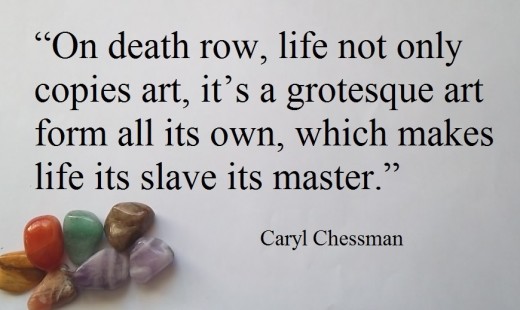
The master of life
Like Barbara Graham, Caryl Chessman, executed in the gas chamber in 1960, did all he could to overturn his sentence. Unlike Ms. Graham, he was not accused of murder. Instead, his series of crimes, viewed in the aggregate, resulted in his execution.
In fact, life on “the row” means the end of autonomy. Indeed, in some U.S. states, those sentenced to death are forced to take a prescribed amount of sedation each day, in order to create a serenity meant to ease the work of those employed to guard them. This system has been analogized to the often alleged overuse of drugs in mental health facilities, more geared to the comfort of staff than relief of the patients’ anxieties.
When death loses its power
While it is true that most defendants will go to any extremity to evade dying due to judicial decree, there are those who, if not welcoming death, have found their lives so fruitless as to render them passive almost to the point of co-operating in their executions.
This state of mind is exemplified by Neville Heath, an Englishman who, sentenced to death in 1946 for the murders of two young women, wrote:
“I have very little to say, except that I think I would rather have things this way rather than spend the rest of my life behind bars.”
Heath, good-looking and charismatic, rose from relative poverty to a growing degree of respect in the RAF, and marriage to a lovely, aristocratic young woman with whom he had a child. Then, for reasons which might have exceeded his own understanding, he wrecked the prospects he had created by pointless flouting of RAF regulations and breaking the law. These breaches consisted of leaving his regiment without leave, committing a forgery and breaking into a house. Most serious of all in the RAF’s terms, he flaunted medals for which his misconduct, he knew, had disqualified him. He received a Court-martial.
Whatever hopes he might have held of retaining his role as husband and father were demolished when, in addition to learning of his disgrace, his father-in-law was obliged to pay Heath’s debts in order to shield the family from what threatened to be an egregious scandal. Due to this disgrace, his wife felt compelled to divorce him. In addition, she made it difficult for him to see their small son.
L. P. Hartley wrote:

Evading the blame
Later, Heath would try to blame the anguish of his discharge and his wife’s having spurned him, combined with lack of contact with his little boy as reasons for his violent acts .
Still, in a circular sense, one might ask why, given such opportunities both as to career and family life, Heath hazarded dismissal from the RAF and the end of his marriage via a few youthful frolics. His tendency to accumulate debts seems to have been his major demon. Still, having grown up fairly poor, why did he not understand the need for a degree of frugality. Arguably, he feared the responsibility this type of abundance might entail on a continuing basis. In addition, the adrenalin needed to spur him to achieve may have felt blocked, frantic for some form of outlet.
Neville Heath’s execution
Though implicated in several cases involving acts of perversion only two killings could be directly attributed to him. Both murders took place in 1946. At that time, the judicial process could not be stalled, as often happens today, by years of appeals. Thus, On October 16 1946, Neville Heath was executed by hanging.
His mother remembers Neville was once a lovely boy
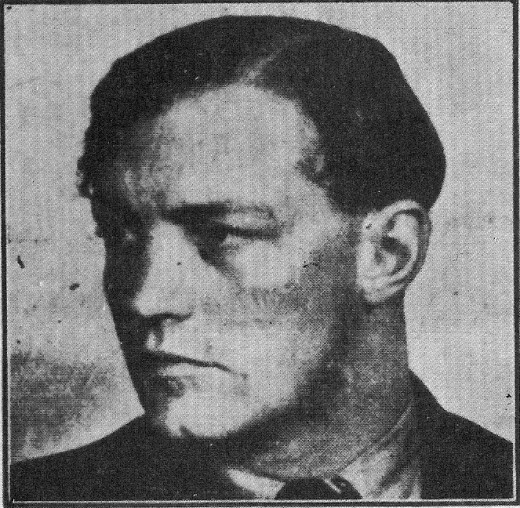
Treasured memories of a killer
No matter how heinous a defendant’s crime /s, those closest to him need to preserve memories of the human being they knew, with all their shared fun and follies. The words of Heath’s mother, after his hanging, may encompass the essence of the thoughts those who continue to grieve for someone the public has come to despise:
“The man who committed those awful crimes was a different man from the handsome, laughing son of mine who used to carry me off to the pictures or tease me gaily about my new dress.”
In what may be his most famous and beloved poem, Dylan Thomas wrote:
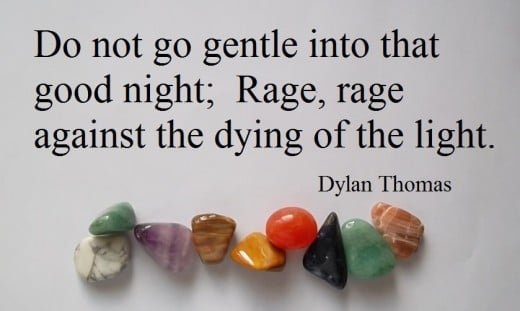
The dying of the light
There are those on death row who find the surge of hope brought about by an appeal, later to be squelched by its failure, too painful to justify its repetition. The amount of such disappointments to be borne varies in terms of individual convicts. Still, at a certain point, some death row inmates abandon the struggle.
This position was taken by former police officer Frank Joseph Coppola, found guilty, with co-conspirators, of having committed a robbery resulting in murder.
In factual terms, having anguished through five unsuccessful appeals, Coppola decided to end his seeking to have his verdict of guilt overturned, or his death sentence commuted. Although maintaining his innocence, he halted what he perceived as his being forced to become grist for the judicial system. At age twenty-eight, convinced he was destined to spend the remainder of his life on death row, Coppola fired his lawyers and informed the court that his battle for survival was at an end.
Thus, he gained a degree of autonomy by retaining a level of dignity. As he stated to one journalist, “I’m not asking them to kill me, I’m telling them to kill me.”
Electric chair constructed by the Corrections Department in 1998 for the Florida State Prison

Concern for his children
Despite his upcoming death, Coppola felt enough empathy for his two sons to impel him to ask the court for an execution date during the summer break, in order to minimize the bullying his boys might encounter if his execution was publicized during the school term. Respecting this request, the judges scheduled his execution for August 10 1982.
Five days before his death in “old sparky”, the grim term used by death row inmates to denote the electric chair, he joked, in a half-serious way, that if no-one else would flip the lethal switch into action, he was prepared to do so himself.
Further reasons for relinquishing life
Existence on death row is, in addition to the phantom of oncoming doom, often precarious. Those who feel they have no escape, lose any reason to fear the consequences of the killing of others. Hence, one inmate strangled another for having changed the TV channel without asking permission to do so.
Another convict told a reporter that an execution would elevate him to a sense of importance. Dying as a result of the natural erosion of old age would render him a nonentity. Conversely, execution would provide a position of significance.
Yet another convict found courage and inspiration in the decision by death row inmate Gary Gilmore to die rather than squander the remainder of his life in decades of confinement. Viewing Gilmore as an icon, this inmate was eager to emulate his decision. Hence, as his date of execution drew near, he felt Gilmore spurring him with the strength of his courage and zest to pursue a more fulfilling hereafter.
Creative nonfiction
Established novelist Truman Capote, in his 1966 book In Cold Blood, established a genre dubbed “the nonfiction novel”. This opened a pathway by which other renowned fiction writers, or even neophytes in the field, could to some degree shape their own characters. This is relevant to our purposes here in that it liberated the renowned Norman Mailer to present his book, The Executioner’s Song, as a work of nonfiction.
The Glamorization of Gary Gilmore
In this book, later made into a film, Gilmore is presented as a likable anti-hero, so inured to institutional life that upon his release from prison he felt like a turtle torn from its shell, or a robin stripped of its feathers. While feeling entombed in a series of reformatories and prisons, he had also had the womb-like sense of his needs being met, requiring no effort on his part.
Though perhaps he felt himself trapped by confinement, from the moment of his conditional parole in April 1976, he seemed determined to return to its safety.
On July 19 1976, not long after his release, he shot and killed two young men, gas station attendant Max Jensen, and hotel manager Bennie Bushnell on the next evening. Later, Gilmore claimed this was done in an effort to rob them of any available cash. This excuse was negated by the fact that both young men complied without struggling. In addition, Gilmore’s family supported him financially, providing him with work and lodgings.
"Let's do it"
Once apprehended by the police, Gilmore made minimal efforts to retain his freedom. During interviews he offered as a defense the possibility that the killings of his victims served to help them carry out karmic debts incurred in previous lives. He added, it could be viewed as an act of mercy to have ensured both were dead, rather than leaving them, for the rest of their lives, maimed and/or brain-damaged.
Indeed, some observers were appalled at Gilmore’s eagerness to have his life brought to an end. The method in use was the firing squad. One of its volunteers was a man who had given Gilmore a job after his 1976 release from prison. Having contributed to his reform, this man was equally willing to participate in society’s vengeance.
Thus, on the morning of January 17 1977, Gary Gilmore died via firing squad. Seeming exuberant rather than frightened, when asked if he had anything further to say, he urged, “Let’s do it.” And so they did, thus ending a life which, whatever potential it once might have held, ended in futility.
Judicial decisions
Although a jury provides its verdict, there is nearly always, where a potential death sentence is involved, a separate judicial hearing where the judge evaluates each circumstance from what is meant to be an objective standard.
As we have seen, in those American jurisdictions retaining the death penalty, it is only applicable in cases of first degree murder. Proof of premeditation can be established where the crime was planned and plotted, rather than galvanic vengeance sparked by an overpowering fury. Circumstances suggesting premeditation include lying in wait, use of poison, hiring someone to kill the intended victim, strangulation, or a killing conducted with slow and deliberate brutality. Such facts indicate progress from the conception of a plan to its later fruition. State statutes vary to some extent, but the basic structure continues.
Mitigating or extenuating circumstances
There are circumstances which, if the court is convinced of their genuine nature, can lessen a defendant’s sentence by convincing a court that the accused would not have committed the crime had it not been for external influences which impaired his ability to think and act in his usual way. A psychotic breakdown may also be encompassed. The same is true of Post-Traumatic Stress Disorder, often debilitating war veterans, and postpartum depression, experienced by some women after childbirth.
Still, each decision is judged on a case-by-case basis. Not every case in which a defendant can prove some type of vulnerability will reduce his judicial sentence. By way of example, the fact that one man shot and killed his wife shortly after his release from a hospital due to drug addiction was not viewed as a valid mitigation. The decision was based on the fact that this circumstance fell outside the statutory boundaries. Harsh as it might seem, to allow any physical or emotional difficulty, past, present or feared in the future, could all too quickly result in an absolute free-for-all.
Arguments for and against the death penalty reach to the deepest level of our perceptions as to when or whether society has the right to kill someone who has broken its most profound principle against the taking of a human life. The length of the appeals process, even after a defendant has been consigned to death row, often complicates the decision of the judge’s or governor’s final signing of the actual death warrant.
Twenty years on death row, especially for those between twenty and forty, can often transform a once arrogant youth of either gender to become an upstanding, hard-working, adult, repenting any act which had caused pain to another.
Mugshot

This struggle is shown in the case of Karla Faye Tucker
Ms. Tucker was executed in 1998 for a double murder in which she took part in 1983. The 14 year delay between Tucker’s conviction and her execution did not erase the reality that she and an accomplice had killed two defenseless victims, in a robbery gone awry, by hacking them both to death with a pick-axe.
Ultimately, Ms. Tucker, having found comfort in the strength of her conversion to the Christian faith, might have lived on in prison for the remainder of her life, helping fellow inmates to discover a sense of peace borne from a feeling of being redeemed.
Conclusion
At this writing, thirty-four states retain the death penalty as an option. This division is no-doubt due to the various social and political views ranging throughout such a vast country.
As it happened, Ms. Tucker committed her crime in Texas, where the death sentence is operative. It is my belief that one federal law should govern all American states regarding the death penalty. I feel there is deep injustice in allowing each state to set its own policy regarding this crucial matter.
Please enter the poll
Do you believe in the death penalty?
Bibliography
- Capote, Truman: In cold blood: A True Account of a Multiple Murder and Its Consequences: Pub: Penguin Modern Classics 2000.
- Caswell, J.D.: A Lance for Liberty: Pub: George G 1961.
- Douglas, John: Law & Disorder: The Legendary FBI Profilers Relentless Pursuit of Justice: Pub: Kensington 2013.
- Jackson, Joe & William F Burke Jr: Dead Run: The Shocking Story of Denis Stockton and life on Death Row in America: Pub: Walker & Company 2000.
- Junkin, Tim: Bloodsworth: The True Story of One Man's Triumph over Injustice: Pub: A Shannon Ravenel Book 2005.
- Mailer, Norman: The Executioner’s Song: Arena Books: Pub: Vintage 1991.
- Meltsner, Michael: The Making of a Civil Rights Lawyer: Pub: University of Virginia Press 2006.
- O'Connor, Sean: Handsome Brute: The Story of a Ladykiller: Pub: Simon and Schuster 2013.
- Old Bailey Cases: Reference Number: t18320405-12: t17900424-6.
- Turow, Scott: Ultimate Punishment: A Lawyer's Reflections on Dealing with the Death Penalty: Pub: Picador 2004.
© 2014 Colleen Swan




